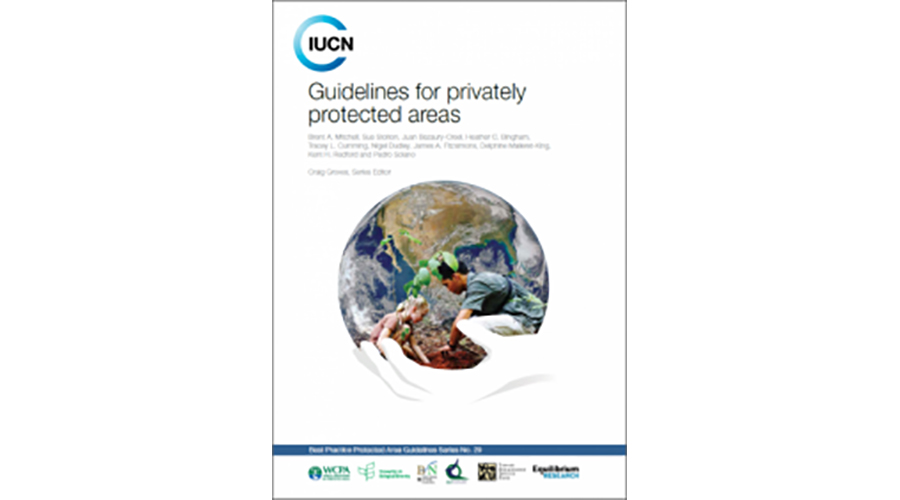Privately Protected Areas Management Guidelines
The IUCN World Commission on Protected Areas (WCPA) is pleased to announce the publication of Guidelines for Privately Protected Areas produced by the IUCN WCPA Specialist Group on Privately Protected Areas and Nature Stewardship, with many contributors from many nations and cultures. These Guidelines provide illustration from field experience on how best to manage, govern, evaluate and conserve privately protected areas globally. The guidelines are the latest in the IUCN WCPA Best Practice Protected Areas Guidelines Series.

Photo: IUCN
Privately protected areas are often under-recognised, despite their significant contributions to biodiversity conservation. These areas, which meet the IUCN definition of a protected area and are under private governance, are highly diverse and involve a wide range of people and organisations. As a result, they experience a set of challenges and opportunities that are often distinct from those faced by government protected areas.
While many thousands of PPAs exist around the world, they do not always receive recognition, support or incentives from governments. When properly supported, they have enormous potential to connect other protected areas across the landscape and seascape, and conserve important species that might otherwise be neglected. The best practices in this report can help landholders to maintain these benefits by ensuring that their PPAs are well-managed, sufficiently-funded and secured into the future. The Guidelines will also be useful to policy-makers working to better support PPAs.
The report builds upon IUCN’s existing guidance on protected areas by exploring issues particular to PPAs and private landholders, and includes a section on considerations that are specific to certain sub-types of PPA. These sub-types include PPAs established by actors outside the typical conservation community, such as for-profit companies and religious entities. In addition, the guidelines discuss the role that networks of landholders can play in connecting otherwise isolated conservation practitioners and initiatives. The report continues to discuss how recording data on PPAs can be used as a tool to raise their visibility, in addition to enabling them to be counted towards international conservation goals such as Aichi Target 11 of the Convention on Biological Diversity.
The best practice guidelines are supported by a set of case studies from around the world, representing a diverse range of landholders and ecosystems. The guidelines are the result of an extensive consultation with IUCN WCPA members and its Specialist Group on Privately Protected Areas and Nature Stewardship. Material support for the publication was generously provided by the German Federal Agency for Nature Conservation (BfN) and the Turner Endangered Species Fund.
Published in English, translations to Spanish, French and Portuguese are planned for 2019.
The Guidelines for Privately Protected Areas is number 29 in the IUCN WCPA Best Practice Protected Areas Guidelines Series.



